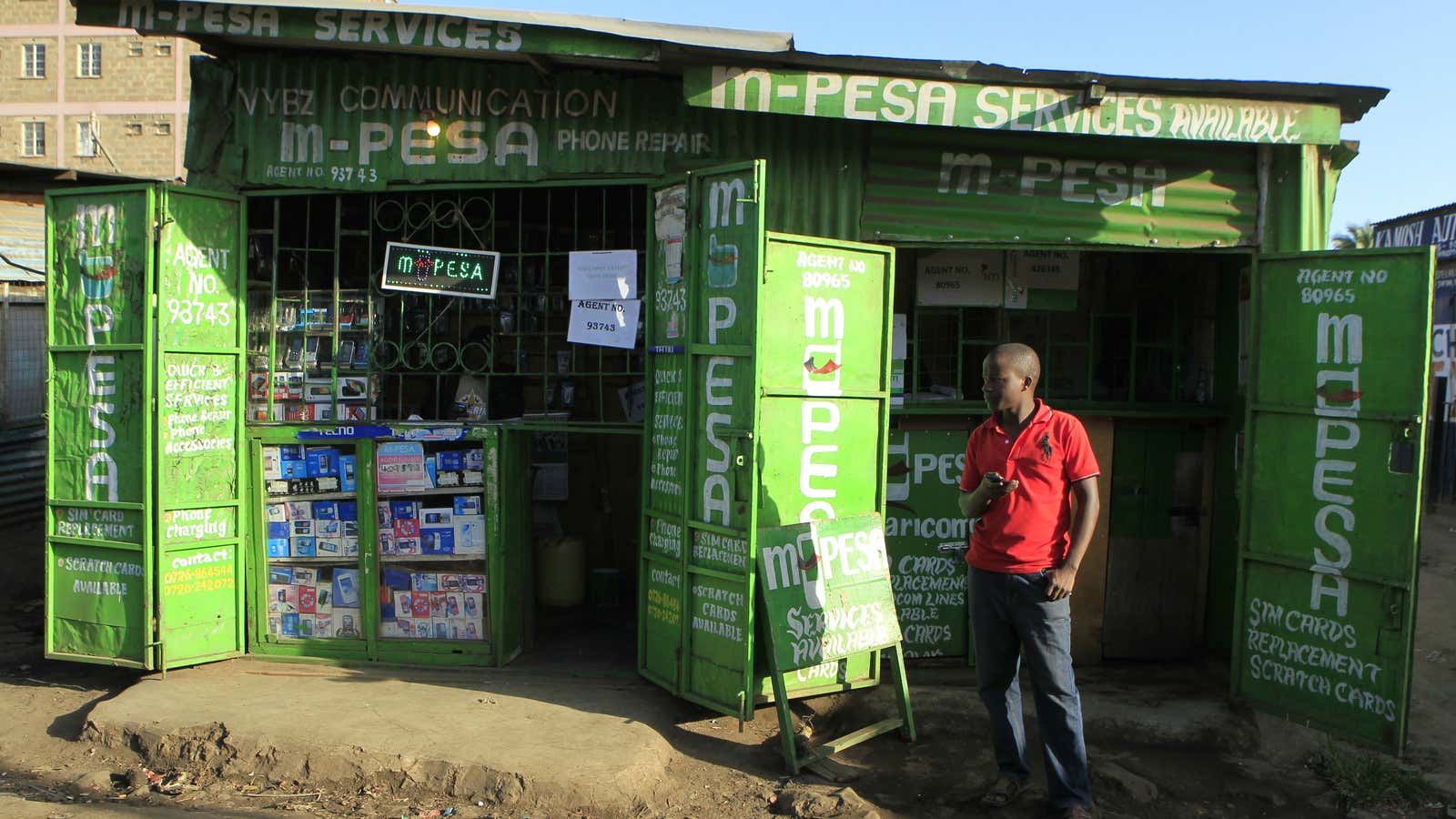At the time of M-Pesa’s launch in 2007, few could have conceived the mobile money service would be as ubiquitous and deeply entrenched in the lives of millions of Kenyans as it is today. A sizable portion of Kenya’s economy is now deeply ingrained in the platform to levels that are starting to concern officials on the economic consequences in the event of system-wide collapse or compromise.
While acknowledging its important role, Treasury officials think mobile money should be regarded as a “plausible fiscal risk” to the country given the growing inter-linkages with different sectors of the economy. At least 25 million Kenyans use the Safaricom-owned service through which they transacted $28 billion in 2015. This was equivalent to about 44% of the country’s GDP of $63.4 billion at the end of the period. In the first three quarters of 2016, it transacted $25 billion. It is the leading mobile money platform globally in terms of regular users and transactions.
“The financial and other institutions linked to this system would be susceptible possibly amounting to the value transacted through the channel, were this risk to materialize,” the government noted in a recently released budget report (pdf, pg.83).
Obvious consequences like loss of deposits, loss of potential state revenue and intractable damage to market confidence would put pressure on the government to compensate for such losses.
Ironically, many of today’s concerns have roots in a relatively relaxed approach to regulating M-Pesa soon soon after its launch.
Back when Kenya’s central bank received an application from Safaricom (pdf, pg.9) seeking authorization of M-Pesa as a mobile money transfer service, it felt that approval would mean having to navigate attendant risks posed to the financial system. But, from inception, M-Pesa was conceived as a low-risk mobile money transfer service. Appropriate measures to ensure adequate system security and to lower its risk profile were taken with some of these including restrictions on the value of transactions and daily limits on values transacted.
The telco would also submit monthly status reports to the central bank. Stringent anti-money laundering and counter-terrorism financing policies were also to be adhered to. More measures continue to be explored according to Steve Chege corporate Affairs director at Safaricom.
“We continuously work with the Central Bank of Kenya and other regulators to test and review the systems put in place and to ensure they are of the highest global standards,” he says.
But, by instinctively side-stepping an overly prescriptive or burdensome regulatory regime, the central bank fortified the mobile money innovation, enabling its extraordinary growth in the last decade.
A 2015 assessment (pdf) by Brian Muthiora, senior regulatory specialist for Africa at GMSA, based on 2013 mobile money statistics, shows the service accounted for 6.6% of total value of national payments system (NPS). This is despite very high transaction volumes of the service (67% of the total NPS volume), effectively reducing mobile money to a “high-volume, low-value retail payments” channel. Conversely, the Kenya Electronic Payment and Settlement System (KEPSS) accounted for 78.6% of the total NPS value, way more than mobile money.
“This evidence should put to rest some regulators’ fears that mobile money services will introduce systemic risk in their markets due to its massive potential for growth,” Mathiora writes (pdf. pg 23).
Mobile money providers have further implemented policies to manage operational risk, safeguard and ring-fence users’ funds, protect consumer interests and plan for business continuity. In April 2015, Safaricom completed the migration of M-Pesa servers from Germany to Kenya. The company says this has greatly improved the performance and reliability of the system and is in addition to measures to safeguard customer data and to improve the resilience and robustness of the service.
Agosta Liko, chief executive PesaPal, an aggregator for online and mobile payments, is also more optimistic.
“As someone who integrates with M-Pesa, the bank systems as well as with Visa and MasterCard, my general feeling is that M-Pesa is extremely reliable,” he tells Quartz.
“They are proactive at communicating when the system is going to experience downtimes, mostly because of an on-going upgrade,” he says. “This is in itself a commitment to the stability of the system.”
